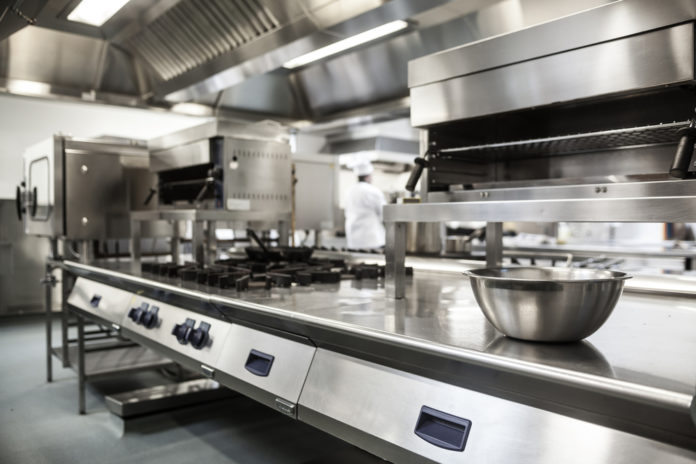Restaurant kitchen equipment forms the basis of the functioning of your establishment. Picking the right equipment not only helps you supply good food to your customers but also helps you cut back on unnecessary expenses, maintaining food safety measures, and preventing accidents in your commercial kitchen. Selecting the appropriate equipment might range anywhere from choosing a commercial walk-in refrigerator to picking the right variety of beverage dispensers. Maintaining the machines also goes a long way in keeping the costs to a minimum. Read on as we discuss strategies to invest in equipment best suited to your commercial kitchen and a list of essential machines for your establishment.
Considerations to Make Before Purchasing Commercial Kitchen Equipment
When you’re deciding on the equipment that keeps the engines of your commercial kitchen running, it’s important to make sure that you’re looking for the right qualities in each of them. Here are the most important considerations you should keep in mind:
- Never Compromise on Quality
Make sure you select equipment only from reputed companies with a history of delivering high-quality products. This will make sure you have a reliable unit in your kitchen, and in the event of malfunctions or damage, a company-backed warranty will take care of the costs so you don’t have to shell out more from your budget for maintenance. Prioritize quality and efficiency for every equipment purchase to save you both effort and money in the long term. This becomes all the more important in the case of large standalone equipment, so make sure you prioritize both brand name and quality in situations like choosing the best commercial ice machine brand.
- Manage Space
Kitchen space is limited. Make sure you know how much of it is available for placing equipment. Filling up your kitchen with unnecessary pieces of equipment will make your commercial kitchen cramped and difficult to work. It’s not just the area that matters, but also the placement. Bring in a planner or layout expert to help you with your equipment placement in your kitchen. Also, bear in mind that foods that you prepare infrequently don’t require large units; you can always manage with smaller countertop units to save up on some much-needed kitchen space.
- Weigh the Pricing Options
Commercial kitchen equipment can be expensive and equipping your establishment won’t be a cheap affair. However, money is best spent on new and quality products. Though renting and leasing are viable options, you are always at the risk of paying extra for repairs in case of a malfunction, whereas new equipment is covered by warranties and guarantees assured by the company for a fairly long period. Always make sure you compare the prices between the top brands when checking for commercial kitchen equipment. Although the upfront costs might be higher, the choice is going to save you money overall.
- Ease of Usage & Maintenance
Even the most advanced technologies are of little use if you cannot use them in straightforward ways. Complicated units require staff to be trained in their usage. Not only does this make the unit’s operation more tedious but also costs you money. Cleaning your commercial equipment should be simple too so that maintenance can be carried out frequently. Machines that are not cleaned regularly are more prone to technical snags and breakdowns. Clean and well-maintained commercial kitchen equipment lasts longer and works better. Make sure you incorporate easy-to-clean equipment in your arsenal along with a comprehensive cleaning protocol.
- Purchase Energy Efficient Equipment
Commercial kitchen equipment that has good energy ratings conserve a lot of power and save you several dollars on your monthly power bills. They also come with added benefits, helping you avail low-interest rate government loans that are given out for your contribution to a cleaner environment. Tax breaks can also be availed for running an energy-efficient kitchen. You can always consult organizations like Energy Star that publish regular energy ratings to all electrical and electronic appliances. Make sure you prioritize energy ratings especially when choosing a commercial walk in refregirator and when choosing the best commercial ice machine brand as these appliances tend to consume higher amounts of power than the others found in a kitchen.
Top Four Categories of Commercial Kitchen Equipment & Their Types
Commercial kitchen equipment can be categorized as:
- Food Processing/ Prepping Equipment: Food processors, slicers, dicers, meat processors & saws, and blenders.
- Food Preparation/ Cooking Equipment: Broilers, Grills & Griddles, Ranges, Induction tops, Ovens, Proofers, Warming Cabinets, Steamers, Kettles, and Fryers.
- Food Holding & Serving Equipment: Food wells, Buffet Warmers, Coffee Decanters, Beverage Dispensers, Water Dispensers, and Juice Machines.
- Storage Equipment: Freezers, Ice Machines, and Walk-in Refrigerators.
Whether it’s a cozy operation or an industrial kitchen you manage, make sure you select high-quality and economical equipment so you can save money and improve efficiency in your commercial kitchen.
Damon Shrauner, Senior Sales Consultant and VP on B2B Sales at CKitchen, working in the food service equipment sector since 1994. With his expertise in market analysis, product placement, sales and project management, he will always tell you what to do for the best of your business.
Kitchen stock image By ESB Professional/Shutterstock







